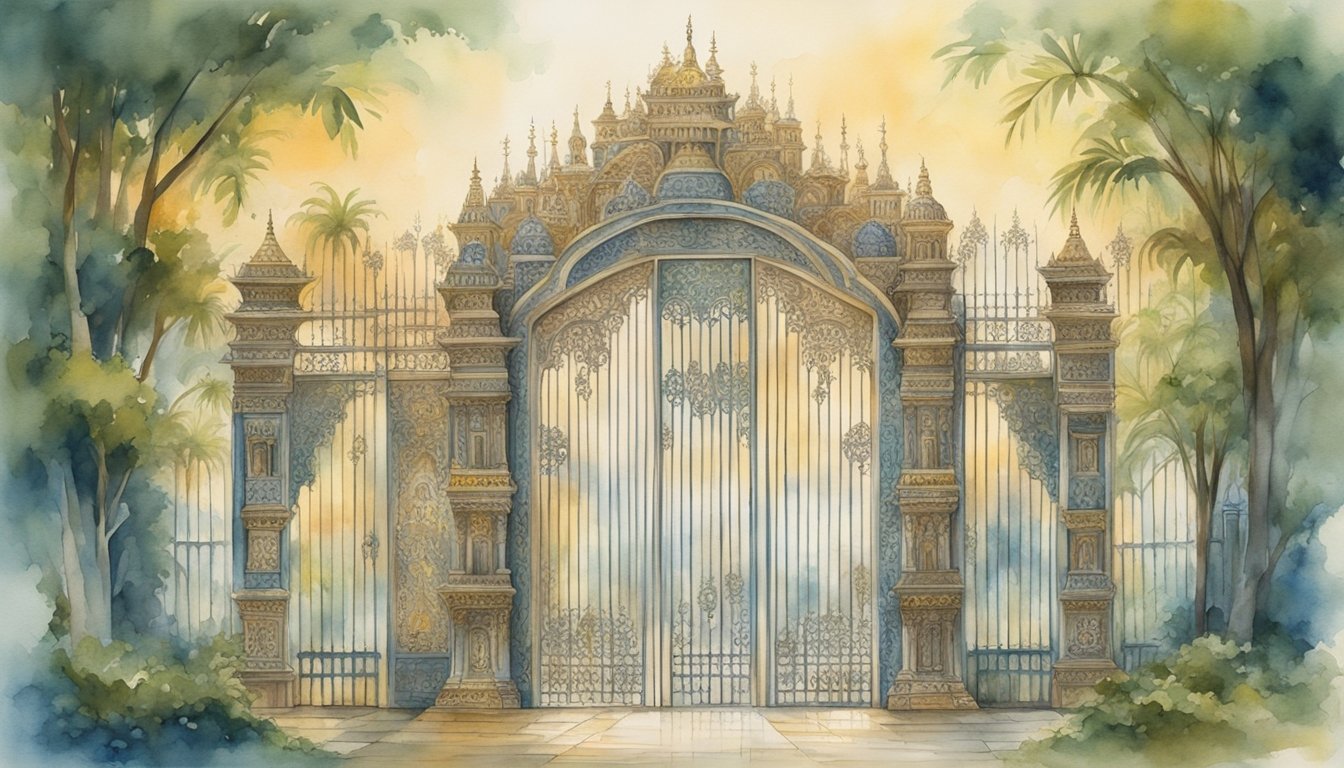The Gates of Paradise: Origin and Craftsmanship
The Gates of Paradise are renowned for their remarkable representation of biblical narratives and for showcasing the innovative artistry of the Early Renaissance.
In this section, we explore the context of their creation by Lorenzo Ghiberti and the groundbreaking techniques he employed.
The Historical Context and Ghiberti’s Triumph
In 1425, the officials of the Florence Baptistery set forth a formidable competition to design a new set of bronze doors for the eastern entrance.
Among the contenders were prominent figures such as Filippo Brunelleschi and Donatello.
However, it was Lorenzo Ghiberti who secured the commission, a feat that solidified his status as a master goldsmith and sculptor.
His work would last from 1425 until its completion in 1452, reflecting the burgeoning spirit of the Italian Renaissance.
The doors depict ten panels with scenes from the Old Testament, including stories of Noah, Jacob and Esau, and David, amongst others.
These narratives are masterfully crafted to convey deep space and three-dimensionality, a testament to the craft and vision of Ghiberti.
Upon their unveiling, Michelangelo himself was moved to declare them fit to be the Gates of Paradise, a name that has since endured.
Artistic Techniques and Materials Used
Lorenzo Ghiberti innovated on the use of linear perspective, a technique that was budding in the Early Renaissance, to offer a sense of depth in the panels.
The scenes seem to extend far into the background, inviting onlookers into the biblical stories they portray.
Ghiberti was a pioneer in employing this method in bronze relief sculptures.
The doors’ construction utilized the lost-wax casting method, allowing for precise detail in the bronze.
Each panel was then gilded, a process involving the application of a fine layer of gold, to give the doors their heavenly sheen.
Restoration efforts have been undertaken by the Opificio delle Pietre Dure to preserve Ghiberti’s masterpiece, which now resides in the Museo dell’Opera del Duomo.
Craftsmanship of this caliber was indicative of the wealth and grandeur of Florence during the Italian Renaissance and showcased the city’s dedication to beauty and the arts.
Cultural and Artistic Impact

The Gates of Paradise stand as a testament to the ingenuity of the Renaissance era, showcasing artistic mastery and technological progress that significantly influenced both contemporary and future generations.
Renaissance Innovations and Influence
Lorenzo Ghiberti took over 27 years to complete the Gates of Paradise, and his dedication is evident in the innovations he implemented.
The bronze panels demonstrate advanced techniques of relief sculpture, known as rilievo schiacciato, giving an unprecedented illusion of depth.
The scenes from the Old Testament displayed on the panels embody the classical idiom of Renaissance art.
One of the ten panels depicts the sacrifice of Isaac by Abraham, showcasing an exceptional use of perspective to create an illusion of space.
By incorporating classical figures and elements like Corinthian capitals, Ghiberti connected the Christian narratives with classical traditions.
His method of casting bronze, involving intricate clay molds and wax patterns, set a new standard for bronze sculptures.
Conservation, Exhibitions, and Legacy
The Gates of Paradise have endured several restoration efforts, notably after the Arno River flood of 1966.
Conservators have utilized laser techniques to painstakingly clean and preserve the panels.
Exhibitions, such as those held by the High Museum of Art, have allowed the public to view sections of the Gates up close.
The narrative reliefs of Old Testament subjects, including tales of David and Goliath, Joseph, and Moses, continue to exemplify the richness of Renaissance art.
These exhibitions provide a crucial platform for education and the ongoing appreciation of Ghiberti’s work, ensuring his legacy within the classical tradition and the annals of art history.

